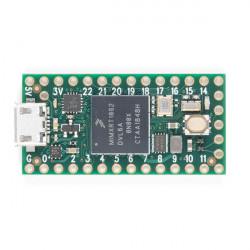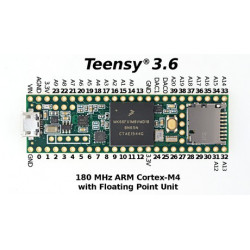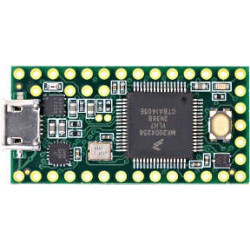Store address and hours
location_on 4131 Fraser St. Vancouver BC Get Directions
phone 604-875-1993 Call us
access_time Hours
| Monday - Friday | 9AM - 5:30PM |
| Saturday - Sunday & Holidays | Closed |
| See Holiday Hours | |

-
 close
close -
CATEGORIES
-
-
-
-
-
-
-
-
-
-
-
-
-
Featured Items
-
-
-
-
-
-
-
More mirco-controllers
-
More Developement Tools
-
-
More Prototyping
-
More Modules
-
-
Featured Items
-
More prototyping Tools
-
-
-
-
-
-
-
-
Featured Item
-
-
-
-
-
-
-
Featured Items
-
-
-
-
-
-
-
-
-
-
Featured Items
-
-
-
-
-
-
-
-
-
-
-
Featured Items
-
-
-
-
-
-
-
-
-
Featured Items
-
-
-
-
-
-
Popular Cleaners
-
-
-
Featured Items
-
-
-
-
-
-
-
Featured Items
-
-
-
-
-
Featured Items
-
-
-
-
Featured Products
-
-
-
-
-
more motor
-
-
more power supplies
-
-
Featured Items
-
-
-
more electrical devices
-
-
-
-
-
-
-
Featured Items
-
-
-
-
-
-
BRANDS
-
- PROJECTS
-
COMMUNITY
-
-
-
FEATURED POSTS
-
-
-
- SALE
TEENSY 3.1 DEVELOPMENT BOARD
PID# 15106
Description
TEENSY 3.1 DEVELOPMENT BOARD
The Teensy USB Development Board is a complete USB-based microcontoller development system.
Version 3.1 features a 32 bit ARM processor.
The Teensy is a breadboard-friendly development board with loads of features in a, well, teensy package. The Teensy 3.1 brings a 32 bit ARM Cortex microprocessor into the mix so you can do some serious number crunching.
The Teensy 3.1 comes pre-flashed with a bootloader so you can program it using the on-board USB connection: No external programmer needed! You can program for the Teensy in your favorite program editor using C or you can install the Teensyduino add-on for the Arduino IDE and write Arduino sketches for Teensy!
The processor on the Teensy also has access to the USB and can emulate any kind of USB device you need it to be, making it great for USB-MIDI and other HID projects. The 32 bit processor brings a few other features to the table as well, such as multiple channels of Direct Memory Access, several high-resolution ADCs and even an I2S digital audio interface! There are also 4 separate interval timers plus a delay timer! Oh yeah, and all pins have interrupt capability. Also, it can provide system voltage of 3.3V to other devices at up to 100mA.
All of this functionality is jammed into a 1.4 x 0.7 inch board with all headers on a 0.1" grid so you can slap in on a breadboard and get to work! On top of everything else the Teensy has been gifted with more RAM (64K, thats 4x more than the Teensy 3.0) and 256kb of flash memory! The Teensy 3.1 now now has 5V tolerance on its digital inputs however all analog-only pins are still 3.3V only.
Note: This does not come with a USB cable, please check below for an appropriate one.
Dimensions: 1.4 x 0.7" (~35 x 18 mm)
Features:
- 32 bit ARM Cortex-M4 72 MHz CPU (M4 = DSP extensions)
- 256K Flash Memory, 64K RAM, 2K EEPROM
- 21 High Resolution Analog Inputs (13 bits usable, 16 bit hardware)
- 34 Digital I/O Pins (5V tolerance on Digital Inputs)
- 12 PWM outputs
- 7 Timers for intervals/delays, separate from PWM
- USB with dedicated DMA memory transfers
- 3 UARTs (serial ports)
- SPI, I2C, I2S,CAN Bus, IR modulator
- I2S (for high quality audio interface)
- Real Time Clock (with user-added 32.768 crystal and battery)
- 4 general purpose DMA channels (separate from USB)
- Touch Sensor Inputs
Sparkfun Documents:
- Datasheet (MK20DX256VLH7)
- Teensy Quickstart
- Teensyduino Software
- Pin Assignment Charts
- Using the RTC
- Product Page
Related products



























































































.png)












